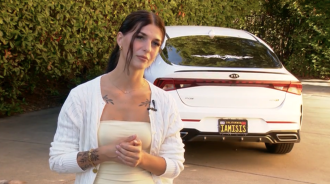Dr Jim Yong Kim on vaccines and 2021
Dr Jim Yong Kim was the former Head of The World Bank and lead of the HIV/AIDS division. He’s also among few folks on the planet who has helped guide nations through five previous pandemics.
Dan Roth, Editor of LinkedIn News, interviewed Dr Kim to get his perspective on the recent vaccine announcements and what lies ahead in 2021. Below are 4 things I took away:
(1) The 95% efficacy of the Pfizer and Moderna vaccines is very encouraging. And, to think they were created with brand new technology is amazing.
The only downsides are that both these vaccines need cold storage. While the Pfizer vaccine requires -70 degrees Celsius, the Moderna vaccine is better at -20 degree Celcius. So, the latter can survive in a refridgerator for a longer period of time. But, both of these will be challenging to transport and use in developing countries.
The Astrazeneca Oxford vaccine, on the other hand, needs just 2-8 degree Celsius for storage (i.e. refridgeration will do). That makes it likely to be used most widely.
(2) A 90% effective vaccine needs 70% or more of the population to have taken it for herd immunity. And, while it is fantastic that we reduced a decade long process to ten months in producing this vaccine, the downside is that there’s plenty we don’t know. For example, we have no idea how long the protection will last. We still have plenty to learn.
(3) In politics and pandemics, ground game is critical. So, Dr. Kim expects the likes of Australia, New Zealand, Singapore, South Korea, et al, to get back to normalcy quickly. He shared why he didn’t expect the US to be on the list.
“I think the military has been doing a good job in terms of the logistics of delivering the vaccine. And right now, it seems like the number of people who say they’re going to get the vaccine has been going up. Fifty percent said that they were going to get it a few months ago.
But people who are going to be suspicious of a vaccine, whether it’s from one group that still doesn’t think COVID is a big issue or another group — and this is communities of color, people living in much more difficult circumstances — that have their own set of suspicions.
And so the way you get past that is by having a really strong ground game, a public health system that’s doing testing and contact tracing and supported isolation. In other words, putting people in isolation and quarantine, but supporting them if they don’t have enough food, if they don’t have diapers for their children. This kind of system is necessary in every state for us to get the vaccine out. And unfortunately, we don’t have that in place in most of the United States.”
(4) So, when could we expect normalcy? He had a few notes on the response from the business community.
“They’re basically looking at what’s happening with viruses, with the vaccines and treatments and their assumption is that once we have a vaccine it’s over. But the scientist who has developed the Pfizer vaccine has been saying, ‘Look, we’re not going to get this to everybody for a long time. And the first signs of normal life in the hardest hit areas — including the United States — is going to be next winter.’ So at least another year.
“You want to speed that up? The way to speed that up is to build public health systems that can put out outbreaks, that can deliver vaccines, that can help people stay safe.”
In short, we’ll end the COVID-19 year with reasons to be optimistic. But, for those of us in the US, it is likely we’ll only begin to see the end of this twelve months from now.






